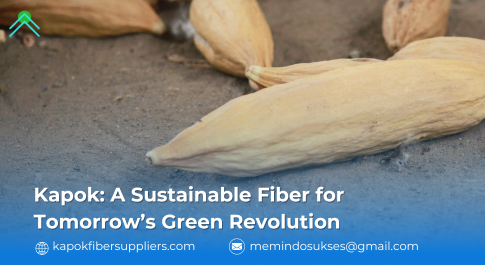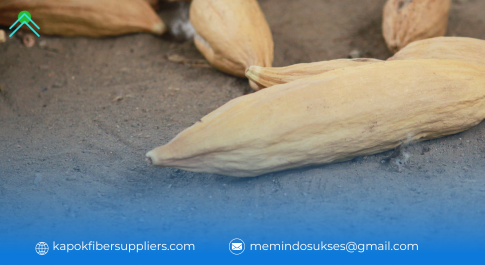
Kapok: A Sustainable Fiber for Tomorrow’s Green Revolution
The world is focusing more on sustainability. Kapok, a natural fiber used for centuries, is making a comeback. Once common in pillows, life jackets, and insulation, it is now being recognized for its eco-friendly and versatile qualities. This article explores how kapok, derived from the Ceiba pentandra tree, offers a sustainable alternative to synthetic materials.
The Unique Properties of Kapok
Kapok is a fluffy, air-filled fiber found inside the seed pods of the Ceiba pentandra tree. These trees grow in tropical regions like Southeast Asia and Central America. When the pods ripen, they release the lightweight fibers. Kapok has several unique properties:
- Lightweight: Kapok fibers are hollow and filled with air, making them lighter than cotton. This makes them perfect for products that need to be light yet durable.
- Buoyant and Water-Resistant: Kapok naturally floats, making it ideal for flotation devices like life jackets. It also resists water, making it useful in humid environments.
- Biodegradable and Eco-Friendly: Unlike synthetic fibers, kapok decomposes naturally, reducing waste and pollution.
- Hypoallergenic: Kapok is free from chemicals, making it a safe choice for people with allergies or sensitive skin.
How Kapok Is Used Today
Kapok’s usefulness is expanding as industries look for greener options. Here are some of its key applications:
- Bedding and Comfort Products: Kapok is a great filling for pillows and mattresses. It is soft, breathable, and hypoallergenic, offering a comfortable and eco-friendly sleeping experience.
- Sustainable Fashion and Textiles: The fashion industry is exploring kapok as a replacement for cotton and synthetic fabrics. Researchers are working on ways to make kapok fibers more durable for clothing and upholstery.
- Flotation Devices and Safety Gear: Kapok’s natural buoyancy makes it ideal for life jackets and rescue equipment. It provides the necessary functionality while being eco-friendly.
- Insulation for Green Buildings: Kapok is a natural insulator and can replace synthetic insulation materials in construction. It helps regulate indoor temperatures while reducing environmental impact.
- Eco-Friendly Packaging: Kapok is being used as a biodegradable alternative to plastic packaging. Its lightweight and protective qualities make it a great substitute for packing peanuts and foam.
Environmental and Economic Benefits
Kapok offers several environmental advantages:
- Carbon Sequestration: The Ceiba pentandra tree absorbs large amounts of carbon dioxide, helping fight climate change.
- Sustainable Harvesting: Kapok is collected without cutting down trees. Only the seed pods are harvested, allowing trees to continue growing.
- Low Water Usage: Unlike cotton, kapok trees require minimal water and no pesticides, making them a sustainable crop.
- Supports Local Economies: Many communities in tropical regions rely on kapok harvesting. Expanding its use can create jobs and support local economies.
Challenges and Future Opportunities
Despite its potential, kapok has challenges. The fibers are delicate and require special processing, which limits large-scale production. However, research is improving processing techniques. As demand for sustainable materials grows, kapok could become more widely used in various industries.
Looking Ahead
Kapok has the potential to replace many synthetic materials in fashion, packaging, bedding, and construction. As more companies and consumers seek eco-friendly options, kapok could become a key player in the future of sustainable materials.
Conclusion
Kapok was once overlooked, but its future is promising. With its lightweight, biodegradable, and versatile properties, it can help industries move toward sustainability. Whether in bedding, clothing, or building materials, kapok is a natural fiber that benefits both people and the planet.clothing, or construction materials, kapok is a natural fiber with the power to make a positive impact on the planet — and the products we use every day.


[…] Carbon Sequestration: Kapok trees absorb significant amounts of carbon dioxide, aiding in climate change mitigation. kapokfibersuppliers.com […]